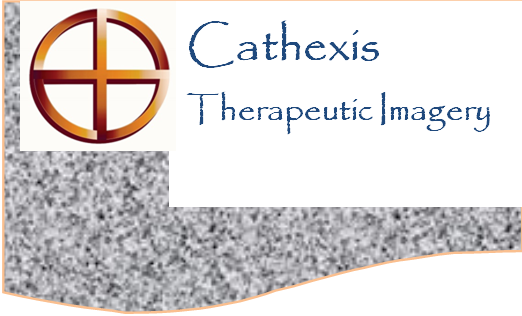Employee Engagement: Why Transparent Management Is The Bottom Line
 Effectively engaging employees as part of building a holistic and organic culture has emerged as a critical differentiator in business. People who are happy with their jobs and love their work environment are more creative, innovative, and dedicated. Yet the concept of employee engagement, in and of itself, is not new. Studies of how attitude in the workplace impacts productivity date back more than a century. Gallup and other companies have been conducting engagement surveys for over 30 years. And today, hundreds of survey providers are available with various tools that allegedly provide benchmarks for the assessment of ’employee engagement.’
Effectively engaging employees as part of building a holistic and organic culture has emerged as a critical differentiator in business. People who are happy with their jobs and love their work environment are more creative, innovative, and dedicated. Yet the concept of employee engagement, in and of itself, is not new. Studies of how attitude in the workplace impacts productivity date back more than a century. Gallup and other companies have been conducting engagement surveys for over 30 years. And today, hundreds of survey providers are available with various tools that allegedly provide benchmarks for the assessment of ’employee engagement.’
Many innovative and successful companies, however, have moved beyond the annual HR employee engagement survey. In fact, keeping a continuous “thumb on the pulse” of employee engagement as part of a larger cultural workplace wellness initiative has become a strategic best business practice. This is partly due to the increased visibility of workplace environments due to social media, as well as the availability of the Affordable Health Care Act, which allows employees more flexibility in changing jobs. According to Deloitte’s Global Human Capital Trends 2014 research (see the study here), 78% of business leaders rank employee engagement and retention as important or even urgent.
Studies Supporting This Emerging Trend
- Recent research in 31 corporations (see CBS Money Watch article here) shows the average turnover costs for employees earning less than $50K per year amounts to fully 20% of their annual salary, while the cost of replacing executives—those earning $50K or more per year—is astronomical, topping out at 213% of their annual salary.
- The fail rate for executive level hires from outside an organization is spectacular as nearly 50% leave within 18 months, according to recent and very comprehensive research by the Society For Human Resource Management (see the study here).
- Gallup’s latest three-year State of the American Workplace Survey shows only 30% of employees are engaged, while 52% are disengaged and 18% are actively disengaged. Gallup estimates the actively disengaged employees alone cost $450 billion to $550 billion each year in lost productivity in the U.S. (see Forbes article here).
- Company leadership and development opportunities have three to four times greater impact on employee retention than negative relationships with immediate managers (see CultureAmp study here).
- A survey of more than 300 companies worldwide and analysis of over 40,000 anonymous responses shows that peer relationships are more important than those with immediate managers, and that management transparency is the top factor in determining employee happiness (see survey by TinyPulse here).
Transparent Management
The diverse and multi-generational workforce of today can adapt quickly to new technologies and environments. They are problem solvers and think unconventionally. What they are after is inclusion in a managerial vision that values people and they are willing to change jobs frequently in order to find it. Modern workers seek assistance in navigating their careers and desire mentoring and coaching. They either want to move up quickly or have the flexibility of positioning themselves to integrate a balance of work and family life. Employees believe formal programs addressing their professional development embody the standards and values of transparent management and a desirable workplace.
“Transparent management is a highly efficient equation: It costs little or nothing to incorporate, yet it is a powerful currency in the marketplace of today’s workforce.”
Today’s sophisticated workers know the look and feel of an inclusive culture and are not easily swayed by insincere language about ‘team’ and ‘open door policy’ from leadership executives and recruitment professionals. And while management transparency can attract and retain top talent, some companies have obstacles to overcome in order to achieve it.
Here are five common problems companies face in implementing the transparency necessary to successfully engage employees:
- A change in ownership or leadership personnel has taken place and the new management has not re-engaged people;
- Existing performance and evaluation processes do not account for increased workloads;
- There is a lack of leadership development, talent mobility, and opportunity for employee advancement;
- A cultural exclusivity exists, impeding personal interaction between employees and leadership; and
- Employee engagement is perceived as strictly an HR function.
The Workplace Wellness Factor
 Constructing a highly engaged workforce requires a variety of initiatives that impact people in different ways. The constantly changing demands of technology and integration of a younger generation of workers requires flexibility in environment and leadership mentality. The companies that are successfully engaging their employees—companies such as Google, Turck, and General Mills—have capitalized on the new paradigm of transparency in a number of ways, including meditation and mindfulness training, as well as broad array of workplace wellness programs that are rigorously supported at every managerial level. This approach not only promotes employee wellness and reduces healthcare costs, it facilitates information sharing, team building and development of peer relationships, invites involvement and visibility of company leaders, promotes leadership development at all tiers of the workforce, and creates the organic and holistic culture employees seek.
Constructing a highly engaged workforce requires a variety of initiatives that impact people in different ways. The constantly changing demands of technology and integration of a younger generation of workers requires flexibility in environment and leadership mentality. The companies that are successfully engaging their employees—companies such as Google, Turck, and General Mills—have capitalized on the new paradigm of transparency in a number of ways, including meditation and mindfulness training, as well as broad array of workplace wellness programs that are rigorously supported at every managerial level. This approach not only promotes employee wellness and reduces healthcare costs, it facilitates information sharing, team building and development of peer relationships, invites involvement and visibility of company leaders, promotes leadership development at all tiers of the workforce, and creates the organic and holistic culture employees seek.
Cathexis Therapeutic Imagery assists companies embrace wellness and employee engagement as a best business practice through the following programs:
- Healthy Diet & Body Image
- Smoking Cessation
- Addictive Personalities
- Stress & Anxiety
- Mindfulness Meditation Training
©2014 by Shawn Quinlivan, C.Ht. & Cathexis Therapeutic Imagery
Cathexis Therapeutic Imagery specializes in innovative approaches to workplace wellness, mindfulness training, and personal development. Via private coaching, presentations, workshops, training events, and our partnership in the unique online wellness community Your Wellness Room—used by Kaiser Permanente, EFactor and other notable companies—our nationally recognized programs and practices help people and organizations make positive changes. Please call for a free consultation at (818) 512-4371 or contact us via email.


